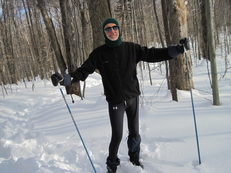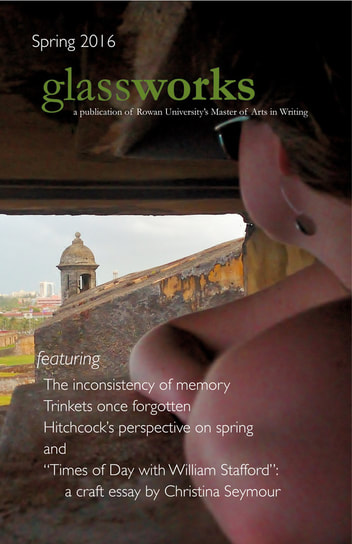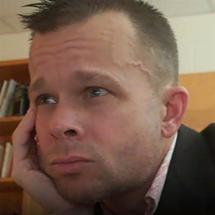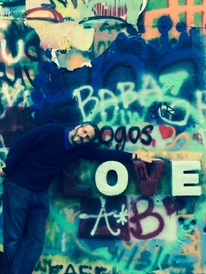|
lookingglass
Through the "Looking Glass," readers are invited to dig deeper into our issues as contributors share reflections on their work. Specifically, "Looking Glass" provides a sort of parlor where authors and artists reveal the genesis of their pieces, as well as provide meta-discursive insight into their textual and visual creative works. Issue 12 Reflections
Read on for reflections by select authors and artists
on the genesis and craft of their pieces in Glassworks and then read the full issue online! |
Claire Day
"A Moment"
My writing is often very visual and is triggered by memories, photographs and paintings. The inspiration for A Moment was an account in our local paper of a house burning down. The accompanying photograph depicted an enormous blaze. Someone posted a video which showed how spectacular and overpowering the flames were. And then the story began, as I began to imagine what it must feel like to stand next to such unleashed power.
Stuart Freyer
"Momma's Famous SOmewhere"

I like to write about outsiders living among us or, perhaps more correctly, those who see themselves in this way: lonelier, shier, imperfect. As well as those who feel more sympathetic, smarter, trickier than thou. I think this describes the rest of us in a way too. The character Rory is patterned after several people I have known. She is somewhat unusual for me in that, as my protagonists tend to live in rural areas, the story is set in the city where I was raised. Rory’s “daughter” Emma is an offshoot of Rory’s unfulfilled need to be adored. I can’t remember when Emma appeared, but when she did, she never left.
Christina Seymour
"Times of Day with William Stafford"

Reading a certain poet for an extended period of time forms an intimate, creative relationship. The poet’s words begin to define my world: “marker rocks” (Lucille Clifton), “eucalyptus pips” (Charles Wright), persimmon/“Chinese apple” (Li-Young Lee), “urine-tang” (Lisa Russ Spaar), “This” (Marie Howe). I accept the poet’s influence to be precise about and attentive to my own world: my cardinal-colored cherry tea, the uneven U’s carved into the wooden yard-sale duck on my desk, the dewy purple of sunset, my hound’s dilated eyes and mountain-peak scruff while meeting a baby goat.
The excitement of discovering and understanding someone else’s personal, emotional, sensory language enriches my moments. For a long time, I noticed that while getting ready for my day, I imagined my current love interest or my most anticipated moment, as if, I matter because I will be seen by someone interesting or because I will be part of an important experience: my hair must be fastened back tight because I will pounce around with my favorite puppy, Elsa; my eyes must be bright because he will look into them; the raw sapphire symbolizing her confidence in me must hang close to my heart. Certain people, animals, and events deserve our readiness.
I believe this is magnetism. Poets that put the world into words that are not only understandable but inspiring, such as William Stafford, make life visceral and worthwhile. “Times of Day with William Stafford” is my way of showing the appreciative, magnetic relationship I created with Stafford’s work. My prosaic diary entries alongside Stafford’s polished verse emphasize the importance of his influence on my growth (in both life and poetry). I chose this diary structure because it felt most authentic; as each new day developed, so did my internalization of Stafford’s words.
My attention to learning Stafford’s language allowed me to record in this essay arbitrary moments that could have remained forgettable, to memorialize them, and to make them notable, teachable, enriched. Poetry does this—calls our attention to the presence of the present. To begin to become such a presence, ourselves, as I believe we do in relationships—imagined, remembered, and real; with text, with others, and with our own worldviews—is our beautifully imperfect attempt to equal the perfection of art.
The excitement of discovering and understanding someone else’s personal, emotional, sensory language enriches my moments. For a long time, I noticed that while getting ready for my day, I imagined my current love interest or my most anticipated moment, as if, I matter because I will be seen by someone interesting or because I will be part of an important experience: my hair must be fastened back tight because I will pounce around with my favorite puppy, Elsa; my eyes must be bright because he will look into them; the raw sapphire symbolizing her confidence in me must hang close to my heart. Certain people, animals, and events deserve our readiness.
I believe this is magnetism. Poets that put the world into words that are not only understandable but inspiring, such as William Stafford, make life visceral and worthwhile. “Times of Day with William Stafford” is my way of showing the appreciative, magnetic relationship I created with Stafford’s work. My prosaic diary entries alongside Stafford’s polished verse emphasize the importance of his influence on my growth (in both life and poetry). I chose this diary structure because it felt most authentic; as each new day developed, so did my internalization of Stafford’s words.
My attention to learning Stafford’s language allowed me to record in this essay arbitrary moments that could have remained forgettable, to memorialize them, and to make them notable, teachable, enriched. Poetry does this—calls our attention to the presence of the present. To begin to become such a presence, ourselves, as I believe we do in relationships—imagined, remembered, and real; with text, with others, and with our own worldviews—is our beautifully imperfect attempt to equal the perfection of art.





